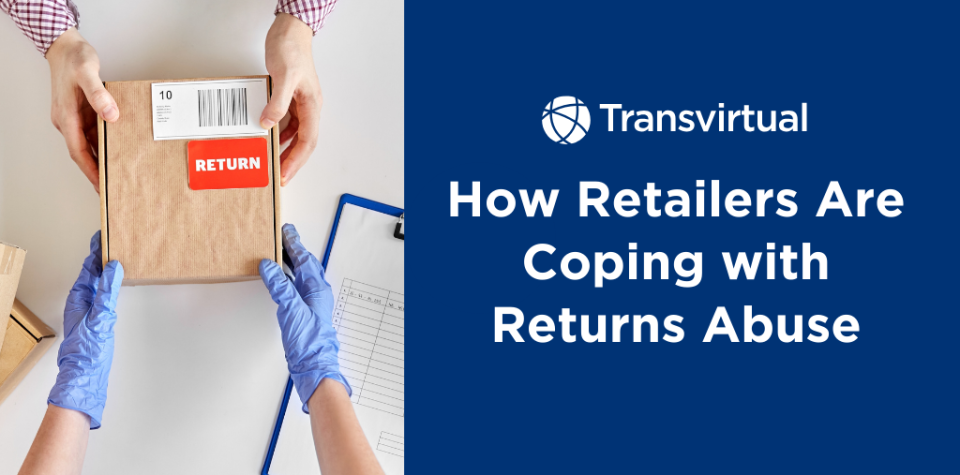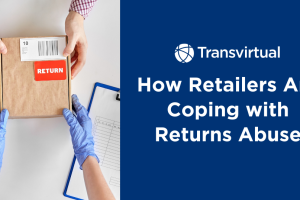Table of Contents
Returns always have and likely always will be a part of retail. In modern ecommerce, though, they’ve become a huge operational and financial flashpoint. Return volumes are soaring and abuse is growing more sophisticated than ever. That means the challenge of dealing with returns has become a huge logistics and profit issue.
Whether you’re a retailer or a logistics professional, you’ve probably taken part in a shifting conversation. You aren’t just talking about the best ways to accept returns anymore, you’re also having to figure out the best ways to manage them strategically and prevent abuse that’s led to skyrocketing reverse logistics costs.
The Growing Problem of Returns Abuse
Online return rates are much higher than in-store, about 20-25 percent versus 8-10 percent. Younger shoppers (Gen Z) are mostly at the forefront of the trend, with 51 percent admitting to ordering multiple items with intent to return most of them. Items sold as new, used, or renewed may have different return policies, which can influence the likelihood of abuse.
Where the Abuse Hits Hardest
Returns often start from an innocent place. Either your customer purchased the wrong size of an article of clothing, or maybe they even had buyer’s remorse. These cases are understandable, and you likely want to encourage returns in those situations. Your store’s change of mind policy helps set clear expectations for customers about when and how they can return items. But it’s when your customers find loopholes in your return policies or begin to treat your system like a rental system that it becomes a big problem.
Here are the main areas where returns abuse occurs in retail:
Wardrobing – When customers purchase clothing or electronics for quick use, then return the items for a full refund.
Bracketing – When customers order multiple variations of a product (different sizes, colors), keep one, and return the rest.
False damage claims – When customers return used or damaged items as new, or claim a non-delivery through misrepresentation.
Empty-box and label-scamming – When customers return a box that looks right and weighs correctly to trigger an automatic refund before inspection.
All of these behaviors are unfortunate realities retailers and reverse logistics teams have to deal with. They lead to serious costs from extra shipments, sorting, inspection, restocking, and often times discarding and refurbishing worn items. Retailers must determine who is responsible for paying return shipping or restocking fees, and customers may be required to pay these costs depending on the reason for the return. Refunds are typically based on the original price paid for the item, and disputes can arise if the price or payment details are unclear.
The Logistics Burden of Abused Returns
Returns abuse affects both your profit statement and the flow of your logistics operations.
Reverse logistics, the process of bringing a product from the customer back through the chain, can account for as much as 7 percent of a company’s gross sales. Costs to handle a returned item range between $3 to $6 per parcel, though that depends on the destination and process complexity. In certain circumstances, such as when items are returned due to a material fault, the process for refunds or repairs may be more complex and take longer.
When a product is returned because of a fault, the retailer may need to work with the supplier to fix or replace the item, sometimes using refurbished parts of the same type. The process for providing a remedy—such as a refund, repair, or replacement—depends on the nature of the fault and the agreement with the supplier.
According to Deloitte, transportation alone accounts for up to 60 percent of total reverse logistics costs. That includes handling, scanning, and routing for return parcels. Customers may lose access to the service or product while waiting for a remedy, especially if the issue is material to the product’s function. And all this happens while legitimate items sit unreplenished in inventory, which skews stock accuracy and efficiency.
How Retailers are Fighting Back
This all sounds intimidating, but retailers are most definitely not taking returns abuse lying down. They still want to maintain good customer experiences, but they have a clear goal: limiting the loopholes without alienating their honest buyers. When updating their returns policies, retailers should seek advice from legal or industry experts to ensure compliance and effectiveness.
Here are their main tactics to fight returns abuse:
Stricter Return Policies
Retailers have started shortening return windows dramatically, from 60 to 30 days or even 14 for more high-risk item categories. They’ve tightened return reason options and placed conditions on refunds. For example, you might only issue store credit for certain returns.
AI-Powered Customer Risk Scoring
Some recent platforms have developed machine learning techniques to detect high-risk return patterns. They can flag shoppers who habitually exploit refund loops or policies. These tools have helped retailers apply stricter policies to chronic abusers without applying the same punishments to every customer.
Charging for Returns
This one is pretty controversial, but many businesses are now charging return shipping or restocking fees. It’s especially popular on low-margin or high-abuse items. Fast-fashion retailers in particular have made this shift to discourage wardrobing and return culture.
Policy Clarity and Reinforcement
Too much of the time, returns abuse stems from vague or overly generous language. You might have feared scaring customers away with your returns policies initially, but now it’s time to tighten up your terms and highlight return policies at checkout. It’s the best way to reduce misinterpretation, whether willfully or otherwise.
Smarter Systems for Smarter Returns
Logistics and transport management systems (TMS) have begun to play a big part in the returns abuse arena. As more visibility and automation is built into the reverse supply chain, there’s less friction and fewer loopholes to exploit.
Tech is helping in numerous ways:
Return Authorisation Workflows: Instead of accepting all returns, retailers are building return approval into their processes. This allows them to review item conditions, customer histories, and reasons before they issue refunds.
Real-Time Return Tracking: A smart Warehouse Manage System (WMS) simplifies returns by streamlining processing, updating stock in real time, and ensuring quality checks on every returned item.
Inventory Reconciliation: Returns can often affect stock accuracy. But with integrated scanning and warehouse updates, each platform can reconcile returns in real time. This prevents overselling and helps to identify damaged or unsellable items faster.
Behavioral Data Integration: When you link return behavior to order history, these platforms can help flag abusive patterns early by feeding data into fraud detection tools or adjusting shipping policies dynamically based on risk.
As costs, volumes, and complexity rises, reverse logistics has become a frontline battleground for operational efficiency and protecting profit margins. You have to change your policies and have systems in place that provide your team the visibility, tracking, and control necessary to manage returns intelligently.
Software tools like Transvirtual support both forward and reverse logistics workflows so businesses can manage their pickups, returns, and delivery exceptions with ease. Your business can effortlessly handle both sides of the delivery experience and turn it into something strategic and scalable.
To learn more about how Transvirtual can help your reverse logistics operations, schedule a FREE strategy session with a member of our team today.



